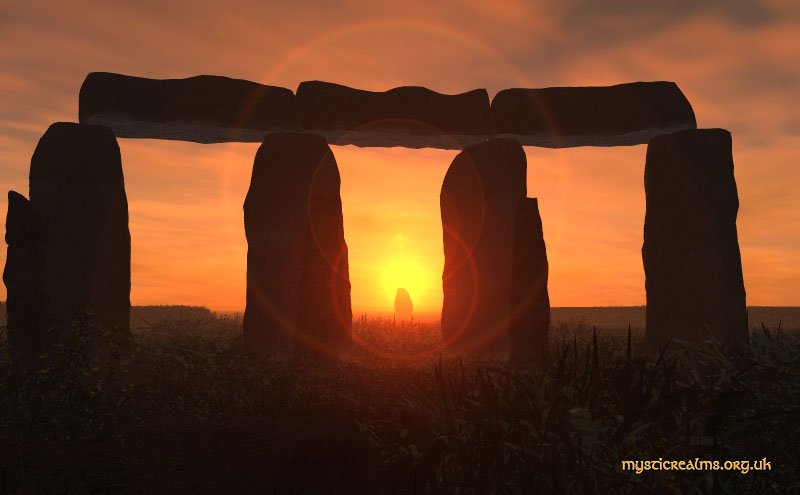Join Us For a Live Sunset at Stonehenge
The most architecturally sophisticated prehistoric stone circle in the world, Stonehenge, located in southern England, provides us with a wealth of questions left unanswered, yet discoveries there so far have helped us to understand more about ceremonies during the Neolithic and Bronze ages. Its first stones were likely raised around 2300 BC, and evidence indicates that the monuments were then rearranged and in continuous use for the next 2,000 years.
Source: EvanEvansTours
The Purpose of Stonehenge
Some scientists have come to the conclusion that Stonehenge was likely built to track the movement of the sun, moon and stars thousands of years ago. For example, it is carefully aligned so that if you sit at the center, you have a clear view of the summer-solstice sun rising over the heel stone. Other theories are that it was a healing site, a burial ground, or all of these things at once. What do you think?
Source: EarthSky
How the Stones Were Moved
The stones are massive - with the largest ones weighing in at 4 tons. And, while the sandstone slabs of its outer ring came from local quarries, scientists traced the stones from its inner ring to an origin point in Wales, 200 miles from where Stonehenge sits. How did they get here? From log rollers and rafts that may have moved the boulders along nearby waterways, to supersized wicker baskets, or a combination of ball bearings, long grooved planks and teams of oxen, enthralling theories about how these stones made it to their destination are bountiful - and no one knows for sure.
The Sounds of Stonehenge
Are the boulders actually big bells? Some of the structure's stones ring just like one when struck. So much so, in fact, that churches in the region used them as their bells up into the 1700s. But, this may have been just a characteristic of its design. Thanks to an intensive new study, the structure was proven to likely have been constructed to amplify sound in very specific ways. The placement of the stones was capable of amplifying the human voice by more than four decibels while producing no echoes; people who spoke or played music inside the monument would have heard clear reverberations against the massive standing stones, and music and other sounds would have been enhanced such that someone standing within the outer circle of stones would have heard conversations from the center with perfect clarity, even as the sound was obscured to those outside. This suggests that perhaps activities such as religious rituals at Stonehenge were intimate events limited to a select group of participants. And, while sound appears to have been an important consideration for the ancient builders, general consensus is still that astrological alignment was the primary factor in the placement of the stones. (1)
Source: TheSoundBlog
Watch the Sunset Live at Stonehenge
The Skyscape website enables us around the world to experience the skies above Stonehenge in real time and to learn about movements of the sun, moon and planets in relation to it.
For those of us in Denver, CO, we can watch the sunset live during this time of year at 11:05 am MST. If you're located in a different time zone, the site will mention your corresponding local time. See the skies above Stonehenge here.
Did you know? In 1620, George Villiers, 1st Duke of Buckingham, dug a large hole in the ground at the center of Stonehenge looking for buried treasure.
Source: History.com
A view of Stonehenge during the Perseid meteor shower. Source: The Atlantic
Source:
1) https://news.artnet.com/art-world/stonehenge-acoustics-1905935





